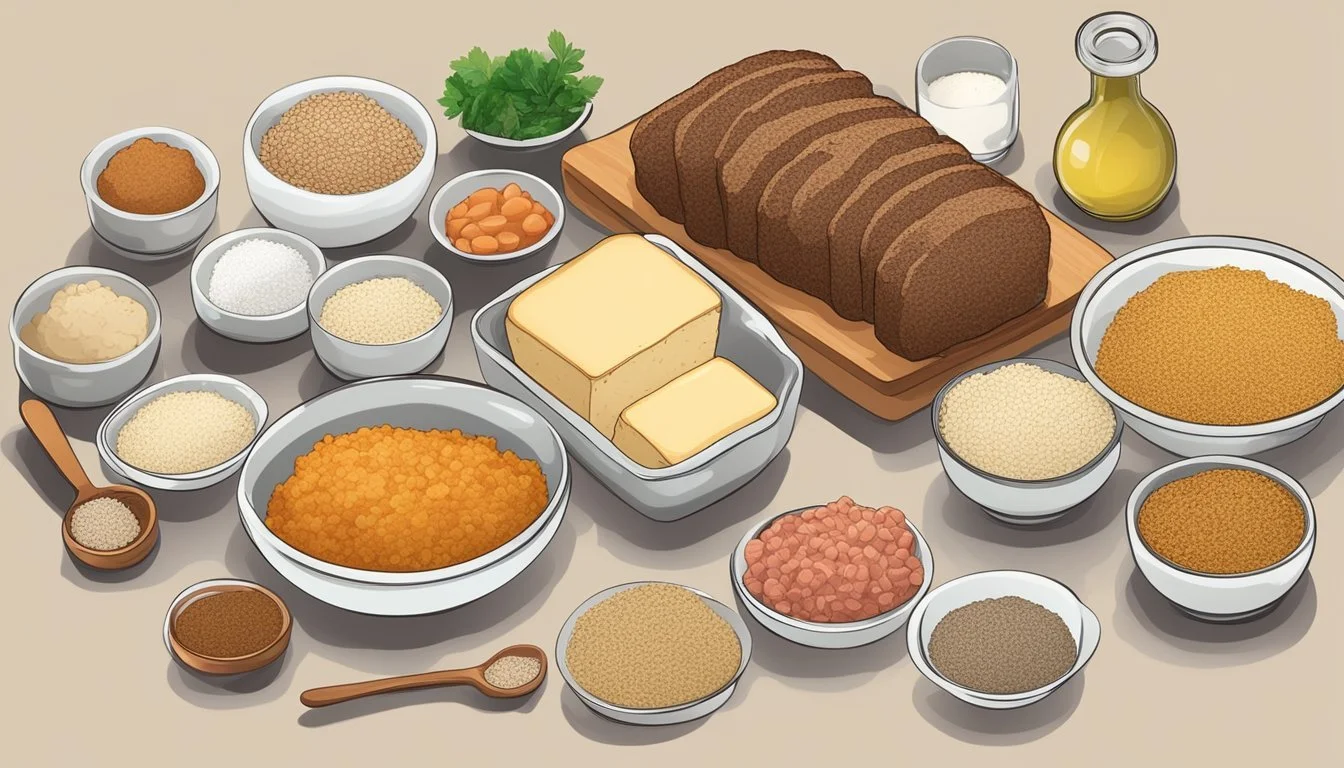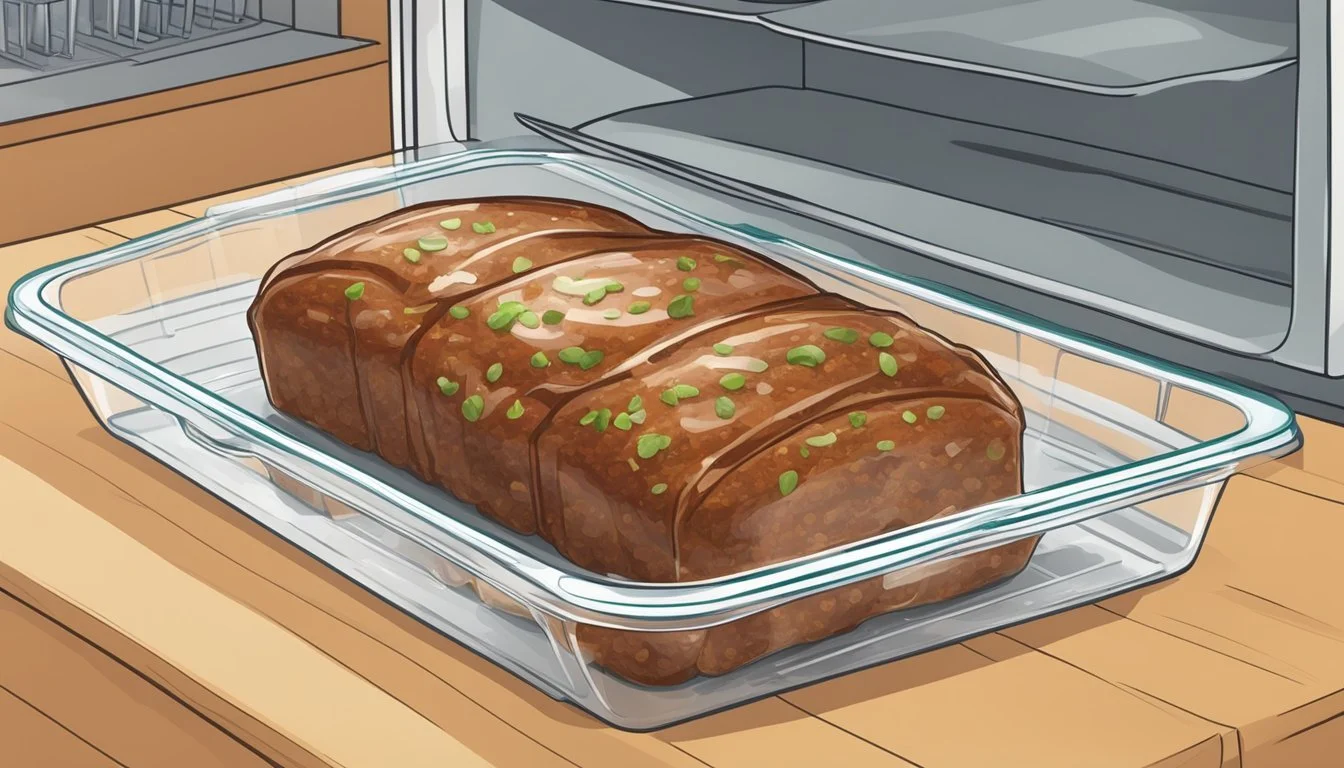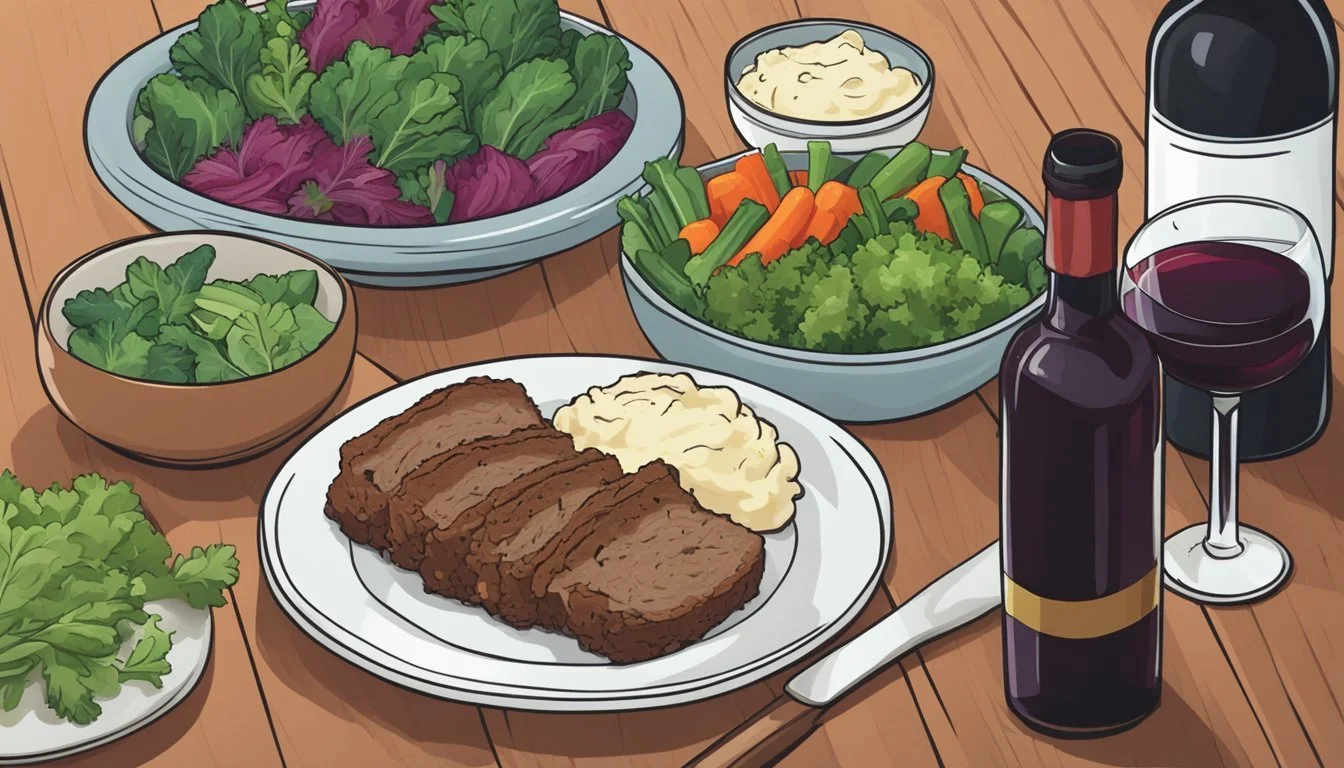How Long Does Gluten-Free Meatloaf Last?
Food Safety Tips
Gluten-free meatloaf is a delicious and nutritious option for those seeking to avoid gluten in their diets. But how long does it last once you've made it? Properly stored in the refrigerator, gluten-free meatloaf can last for up to 3-4 days. This ensures that the flavors remain vibrant and the texture is enjoyable.
For those who enjoy meal prepping or simply want to save leftovers for the future, freezing gluten-free meatloaf is also an option. Wrapped tightly in foil or stored in an airtight container, it can be frozen for 2-3 months. This makes it convenient to have a hearty meal ready at any time without compromising on taste or quality.
When storing gluten-free meatloaf, whether in the refrigerator or freezer, it's essential to ensure that it is cooled to room temperature before sealing it in a container. This practice helps to maintain its freshness and prevents moisture build-up that could lead to spoilage.
Ingredients and Substitutes
Making a gluten-free meatloaf involves selecting appropriate ingredients that maintain texture and flavor while adhering to dietary requirements. Key considerations include alternatives to breadcrumbs, the choice of ground meat, seasonings, and binding agents.
Gluten-Free Breadcrumbs and Alternatives
Traditional meatloaf recipes often call for breadcrumbs to help bind the mixture and add texture. Gluten-free breadcrumbs are a direct substitute and are readily available in stores.
For a homemade option, gluten-free oats can be ground into a coarse meal. Alternatively, crushed gluten-free crackers or quick-cooking oats are effective in providing the necessary binding and texture. For a nut-free option, almond flour is a viable substitute, giving a nutty flavor without the gluten.
Selecting the Right Ground Meat
The choice of meat is crucial for flavor and texture. Ground beef is the typical base for a meatloaf but combining it with other meats like ground pork or ground turkey can enhance the flavor and moisture.
Using a mix of meats helps to achieve a balance of fat and protein, resulting in a juicier loaf. It's important to select meats with enough fat content, as lean options can result in a drier texture.
Seasoning for Flavor Enhancement
Seasonings are essential to elevate the meatloaf's taste. Common ingredients include salt, black pepper, garlic powder, and onion powder. For additional depth, Worcestershire sauce and Dijon mustard can be added.
Fresh herbs like parsley or dried herbs such as thyme and oregano also bring a nuanced flavor. Garlic and onion sautéed in olive oil add sweetness and depth when mixed into the loaf.
Binding Agents for Texture
Besides breadcrumbs, eggs are commonly used as a binder to hold the meat mixture together. They add moisture and help achieve the desired structure. In addition to eggs, milk can be incorporated, contributing to tenderness.
For dairy-free options, apple cider vinegar or non-dairy milk alternatives can be used. Gluten-free gravy or ketchup also helps in binding and adding moisture while enhancing the flavor profile.
Through thoughtful selection and substitution of these ingredients, one can create a delicious gluten-free meatloaf that maintains the integrity and enjoyment of this classic dish.
Storing and Preserving Gluten-Free Meatloaf
Properly storing and preserving gluten-free meatloaf ensures longevity and maintains its flavor and texture. This guide covers techniques for refrigeration, freezing, and reheating.
Cooling and Wrapping for Refrigeration
After cooking, allow the gluten-free meatloaf to cool to room temperature. Cooling it properly avoids condensation, which can lead to sogginess. Use plastic wrap or aluminum foil to wrap the meatloaf tightly. Place in an airtight container.
In a refrigerator set to 40°F (4°C) or lower, the meatloaf will stay fresh for up to three days. Label the container with the date to keep track of its freshness.
Freezing and Thawing Techniques
For longer storage, freezing is ideal. Wrap individual portions of the meatloaf tightly with plastic wrap and then a layer of aluminum foil. This dual-layering helps prevent freezer burn. Place wrapped portions in a freezer-safe bag or container.
Frozen gluten-free meatloaf can last up to three months. To thaw, transfer to the refrigerator 24 hours before planned use.
Reheating for Optimal Flavor and Texture
When ready to reheat, ensure the gluten-free meatloaf heats evenly by preheating the oven to 350°F (175°C). Remove the meatloaf from its wrapping. Place it in an oven-safe dish and cover with foil to retain moisture.
Heat for about 25-30 minutes, using a meat thermometer to check that the internal temperature reaches 165°F (74°C) for safe consumption. For a crispier texture, remove the foil for the last 10 minutes of heating.
Additional Serving Suggestions and Pairings
Pairing gluten-free meatloaf with complementary side dishes and enhancing flavors with sauces and gravies can elevate the meal to a comforting and satisfying experience.
Side Dishes to Complement the Meal
Mashed potatoes are a classic choice, providing a creamy texture that contrasts nicely with the meatloaf's firmness. For a healthier twist, consider using cauliflower mash as a low-carb alternative.
Green beans, steamed or sautéed with a bit of garlic and olive oil, add a fresh, crisp element to the plate. Adding a sprinkle of toasted almonds enhances both flavor and texture.
A crisp salad with mixed greens, cherry tomatoes, and a light vinaigrette balances the richness of the meatloaf. Including ingredients like arugula or spinach packs extra nutrients into the meal.
Sauces and Gravies for Added Moisture and Flavor
A tangy glaze made from ketchup, brown sugar, and apple cider vinegar can be brushed on the meatloaf before baking, adding a sweet and sour dimension.
For more traditional options, gravy made from meat drippings or beef broth provides richness. Those looking for a kick can mix in a bit of paprika or hot sauce.
Serving meatloaf with a side of barbecue sauce or a gluten-free Worcestershire sauce enhances the savory notes and provides an extra layer of flavor. These sauces can be served on the side for dipping or drizzling over slices.
Nutritious and Health Considerations
When making gluten-free meatloaf, lean ground beef is often a popular choice. It provides a good source of protein without excessive fat. Ground turkey or chicken can also be used as leaner alternatives.
Many recipes incorporate gluten-free breadcrumbs, which ensure the dish remains safe for those with celiac disease or gluten sensitivity.
For those needing a dairy-free option, substituting regular milk with almond milk or another plant-based milk can work well. Adding flax eggs in place of regular eggs is another way to keep the dish vegan and gluten-free, as seen in some vegan gluten-free meatloaf recipes.
Key Nutritional Information
Nutrient Amount (per 100g serving) Protein 20-25g Fat 10-15g Carbohydrates 5-10g Fiber 1-2g Calories 200-250 kcal
Meatloaf often includes a variety of herbs and spices such as thyme and parsley, which can add not only flavor but also additional nutrients like vitamins A and C.
Adding a gluten-free gravy can both enhance the flavor and provide additional nutrients. Gravy made from bone broth, for example, can add collagen as well as minerals such as calcium and magnesium.
Thus, gluten-free meatloaf, particularly with lean meat and dairy-free options, can be nutritious while catering to various dietary needs.
Tips and Tricks for Perfect Gluten-Free Meatloaf
Perfecting gluten-free meatloaf involves ensuring it stays moist, achieves a delicious crust, and allows for flavor variations using ingredients that complement the dish well.
Ensuring Proper Moisture Levels
Maintaining moisture in gluten-free meatloaf is crucial. Use ground meat with higher fat content, like a blend of beef and pork. This helps to keep the meatloaf tender and juicy. Incorporating vegetables such as finely chopped onions and bell peppers can also add moisture.
It is also essential to use a binding agent. Gluten-free breadcrumbs soaked in milk create a moist texture. Eggs serve as a vital component that binds ingredients together while adding richness.
Achieving the Perfect Crust
The crust of a meatloaf can make a significant difference in both texture and taste. Cooking the meatloaf on a baking sheet lined with parchment paper allows the sides to caramelize, forming a rich crust. Alternatively, if using a loaf pan, line it with parchment paper for easy removal.
Brush the meatloaf generously with a ketchup glaze or barbecue sauce before and during baking. To enhance the caramelization, broil the meatloaf briefly at the end of the baking process. Monitoring the internal temperature with a meat thermometer ensures it reaches 165 degrees Fahrenheit without overcooking.
Flavor Variations and Customizations
Customizing the flavors of gluten-free meatloaf can elevate the dish. Adding herbs like thyme or dried thyme brings out a savory note. For those who prefer a tangy glaze, mixing ketchup with a bit of Worcestershire sauce achieves this effect.
Experimenting with different sauces can also create unique tastes. Try a barbecue sauce for a smoky touch or add Parmesan cheese into the meat mixture for added depth. Adding a mix of ground meats can also modify the flavor profile, creating endless possibilities for homemade adaptations.
Maintaining these tips and tricks ensures that the meatloaf is moist, flavorful, and enjoyable for everyone.







